#historical tailoring
Text
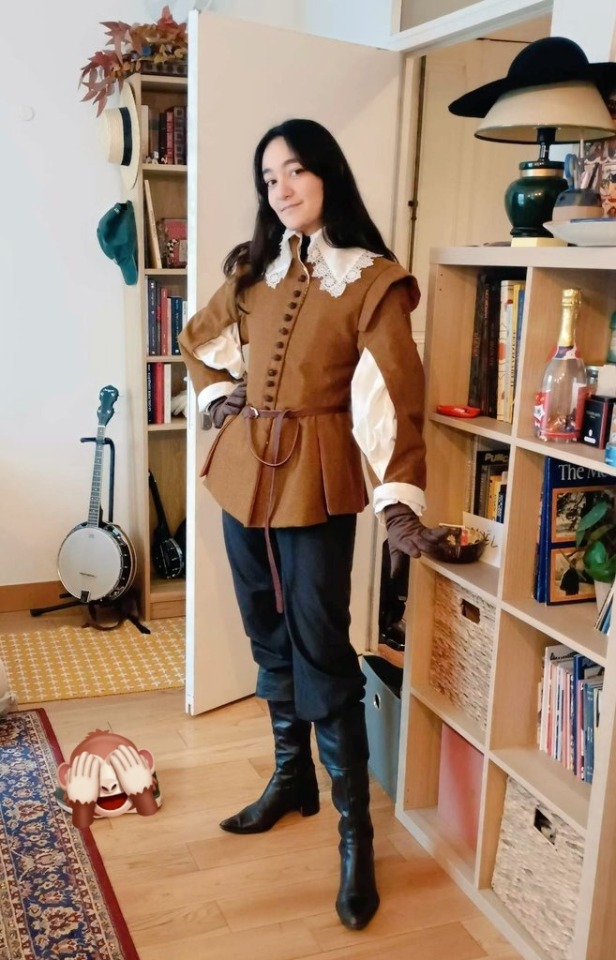
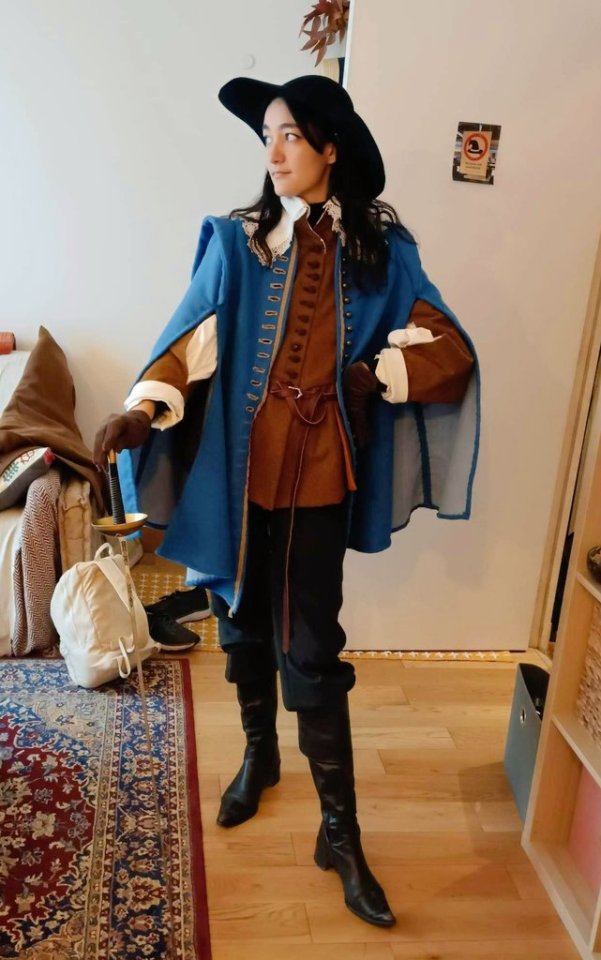
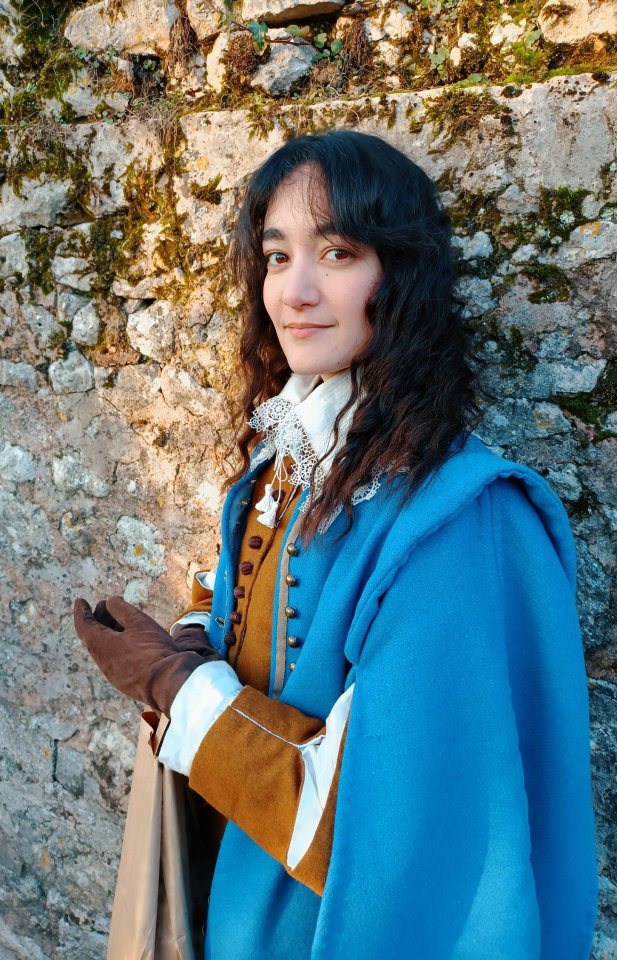
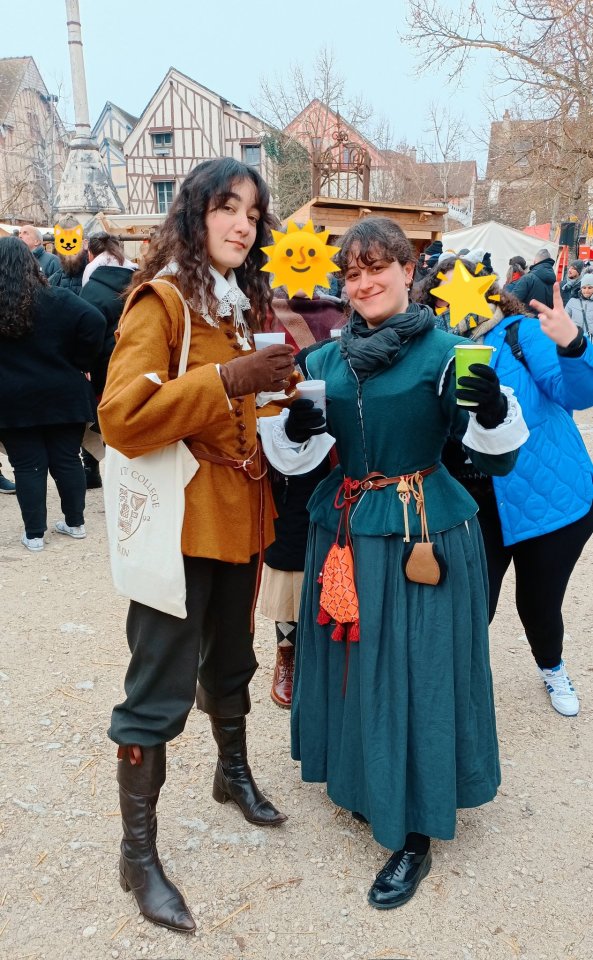

Costume update !! I finally got to wear my 17th century outfit at Provins last weekend. I made the doublet with handmade threaded buttons, the linen shirt, the falling band & tassels, and a very rushed cassock that I'll probably fix or re-make when I have more than a couple of days ahead of me, lol. The lace is from tudor tailor and the boots & pants were thrifted.
I one day I'll find a way to make nice pictures of my costume, too, that'd be nice.
#mine#17th century#historical costuming#cavalier fashion#historical tailoring#sewing#1620s#partner in costume crime is @surikane !#that might be a face reveal for a lot of you lads hehe
7K notes
·
View notes
Text
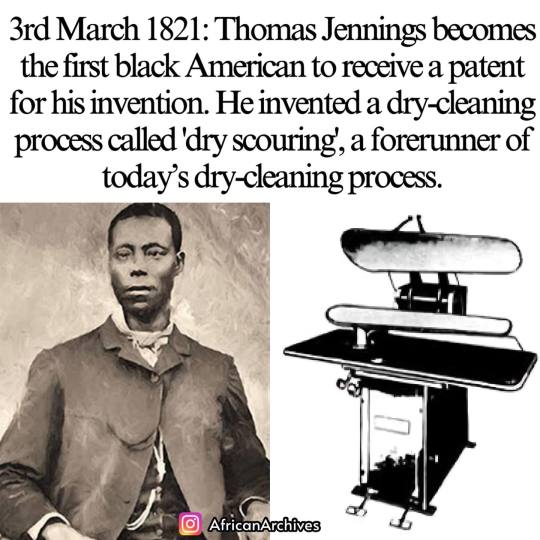
Thomas Jennings was a free man born in 1791 in New York City. He was 30 years old when he was granted a patent for a dry cleaning process. In his early 20s Thomas Jennings became a tailor, and later opened a dry cleaning business in the city. As a tailor. Jennings' skills were so admired that people near and far came to him to alter or custom tailor items of clothing for them. Eventually, Jennings reputation grew such that he was able to open his own store on Church street which grew into one of the largest clothing stores in New York City.
While running his business Jennings developed dry-scouring. He had many customers complain of their clothes being ruined by stains and so he began experimenting with cleaners and mixtures that would remove the stains without harming the material. He earned a large amount of money as a tailor and even more with his dry scouring invention and most of the money he earned went to his abolitionist activities. In 1831, Thomas Jennings became assistant secretary for the First Annual Convention of the People of Color in Philadelphia, PA.
Thomas L. Jennings Dry Scouring technique created modern day dry cleaning. Jennings was fortunate that he was a free man at the time of his invention. Besides all the other indignities and cruelties slaves had to face, they were also ineligible to hold a patent. Under the US patent laws of 1793 a person must sign an oath or declaration stating that they were a citizen of the USA. While there were, apparently, provisions through which a slave could enjoy patent protection, the ability of a slave to seek out, receive and defend a patent was unlikely. Later, in 1858, the patent office changed the laws, stating that since slaves were not citizens, they could not hold a patent. Furthermore, the court said that the slave owner, not being the true inventor could not apply for a patent either.
Thomas Jennings died in New York City in 1856.
#black history#Thomas Jennings#dry cleaning#inventor#tailor#abolitionist#New York City#patent law#slavery#abolitionist activities#dry scouring technique#historical injustice#patent discrimination#civil rights activism#African American entrepreneurship#19th century America
409 notes
·
View notes
Text
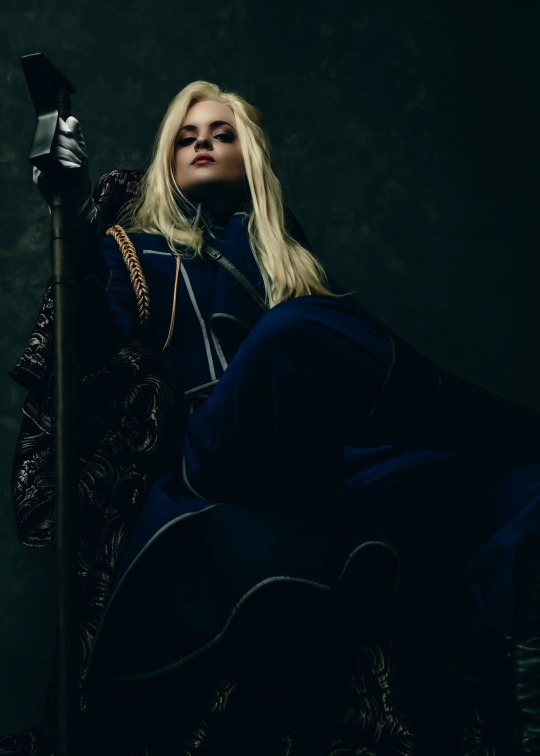
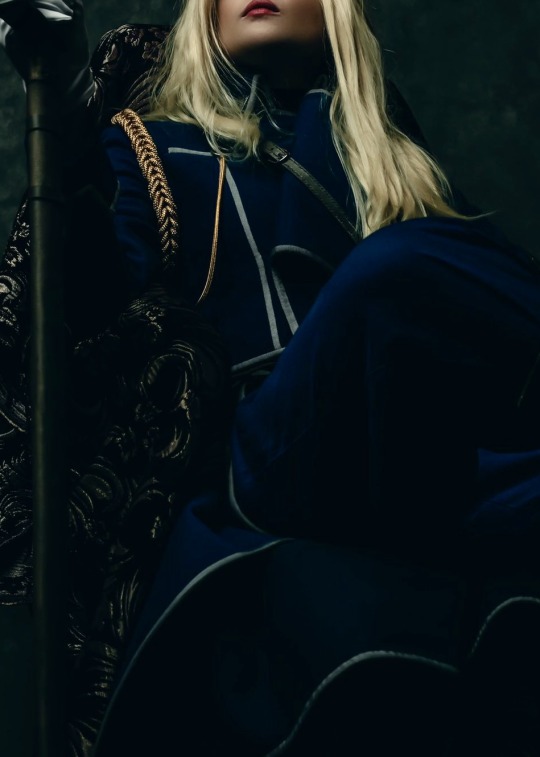


On October 3rd, Elric asked me what day it was.
I said, ‘How dare you to talk to me, you coward.’
Major General Olivier Mira Armstrong
Traditionally tailored uniform, 2019
Japanese twill, canvas, grosgrain, leather, gilt braid
#project: major general Olivier Mira armstrong#media: fullmetal alchemist#fma#fullmetal alchemist#Olivier Armstrong#fullmetal alchemist day#extant projects: 2019#tailoring#historical costume#historical sewing#cosplay#poetry in costume#I’m still so sad about my wig in this shoot - it took me a while to really nail the armstrong curl plus this was the hottest day that year#and I moved a bunch of furniture around after I was bewigged so that really messed things up. oh well!#at least I nailed it for competition#tho I have exactly one selfie to prove that
398 notes
·
View notes
Text

Carte de visite of a roguishly handsome pair of brigands menacing a fortu—I mean, unfortunate—gentleman, c. 1870s. We must be grateful to whichever previous owner has outlined the crouching brigand's dagger in pen, for without this clarification the casual viewer might be in danger of misreading just what that brigand’s hand is doing there. 😏
#oh no just imagine being a 19th century gent innocently enjoying a stroll only to be accosted by wicked brigands#and what if one of the wicked brigands' shirt falls open exposing his nipple#and what if the other wicked brigand—his shirt also open to the waist (have these brigands no tailor??)—held a dagger to your trousers#19th century#1800s#1870s#19th century fashion#historical fashion#fashion history#men's fashion#19th century photography#carte de visite#cdv#brigands#very pleased to report I got this one for (imo) a steal—a really fantastic addition to#my collection
241 notes
·
View notes
Text
The Tailor & The Seamstress - A Reading Aid
So here's some stuff I'm just putting up here as a kind of glossary/reading aid/moodboard collection for The Tailor & The Seamstress.
It's not an easy read in some ways, because it's set in 1910 and deals with some fashion terminology that can be opaque, so yeah. Just dropping this here.
Accents
Firstly, Remy and Anna do not speak in their accents, and that was deliberate. Working where and in what they do (i.e. haute couture in 1910's New York), having a Southern accent would have been very uncouth. For professional reasons they would have got rid of their accents, or polished them off, fairly quickly. But both of them actually filed off their Southern accents earlier in life, for entirely different reasons (which will become clear later on in the story).
The closest you'd probably get to what they sound like is probably the Transatlantic accent, which developed in the late 19th century in the acting industry and among the American upper class. (Thanks to @narwhallove for pointing this out!).
You can hear what this accent sounded like in 1930's and 40's Hollywood movies:
Dress Forms
There are a lot of dress forms floating around in this story. A dress form is very much like a mannequin, where a garment can be mounted on it to make working on it easier. The difference between a dress form and a mannequin is that a form can be adjusted to different sizes. Here's an example:

Nowadays, dress forms usually conform to modern standards of sizing, but back in the day, all dressmakers/fashion houses would have dress forms made according to the sizing of their target clientele, and adjustments would be made to individual customers when a dress was purchased.
The dress forms at the House of Burford, of course, are made to Anna's measurements. 😉
Maison Maillot
The idea of Remy working at a waning fashion house was inspired by the historical House of Worth, which was probably the world's first modern atelier. Established in 1858 by Charles Frederick Worth, it came to dress empresses, queens, actresses and singers. The business was later taken over by his sons, but the house's fortunes waned in the early 20th century. IMHO, you begin to see the decline in design quality by the 1920's. Worth was bought out by the House of Paquin in 1950, and closed in 1956. In 1999, it was revived.
Early Worth designs were so powerfully beautiful, and always innovative and at the cutting edge. In the story, the House of Maillot's heyday would have been the same - a tale of an exciting and forward-thinking atelier that dressed the best and brightest.


By the early 20th century, at the time of the story, they are still putting out beautifully breath-taking clothes - but decades of newer competition means that their work no longer stands out. By the 1910's, the House of Worth had been eclipsed by designers like Callot Soeurs, Paul Poiret, and Lucile (of Titanic fame), who were becoming the innovators in women's dress, and Worth tended to follow where others led. This is where Maison Maillot is at in the story; and their rival, the House of Burford, is one of those new and exciting innovators in fashion.

By the 1920's, fortunes have fallen, and the House of Worth was putting out stuff like this:

The Peacock and the Phoenix Dresses
The rival dresses don't have any analogue in real life, but here are the dresses that roughly inspired them.
A 1909 evening dress by Callot Soeurs:

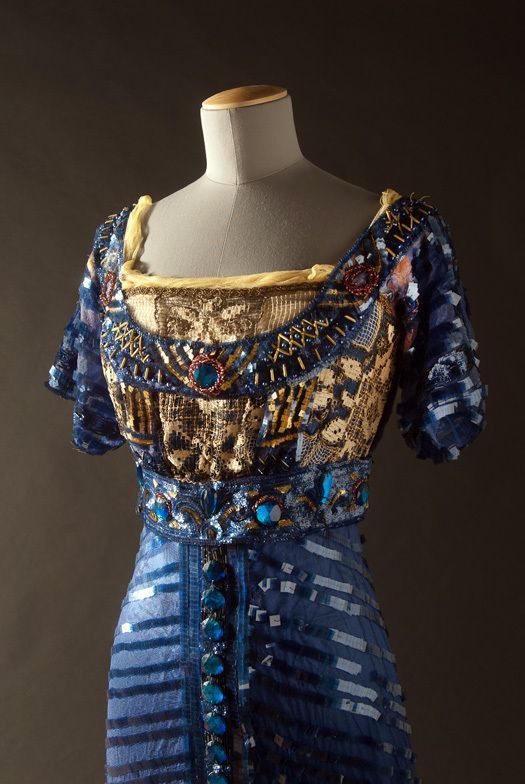
And a 1913-14 evening dress by an unknown artist:
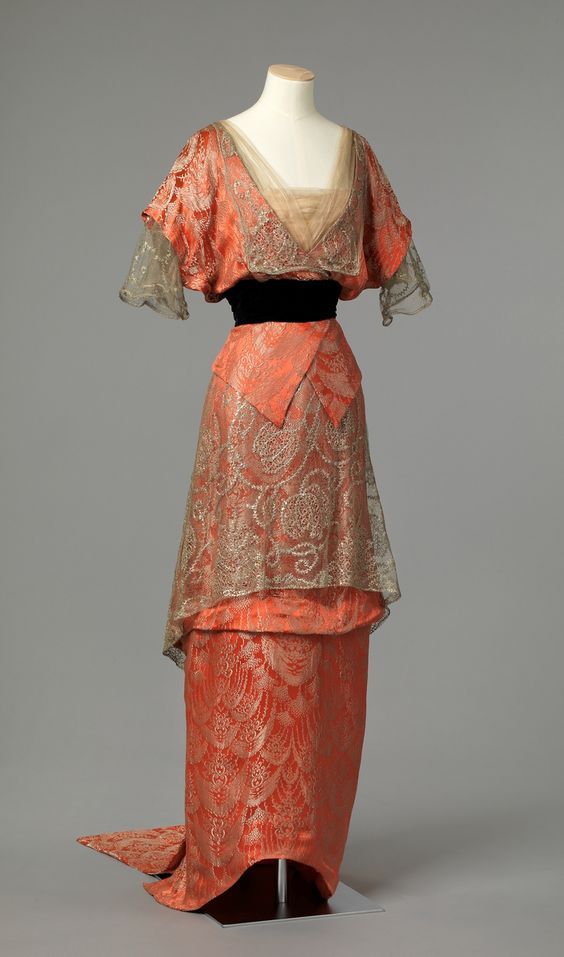

I like to think of Remy always being slightly (maybe a lot) more ahead of his time with his clothes than Anna is with hers. Remy is designing tubular dresses a few years before they started to become a fashionable silhouette. Ironically Maillot rejects them, but I find it kind of funny that by the end of the decade, he'll have been wishing his house had set the trend Remy had conceived of years before.
At SOME POINT I will draw how I envision the dresses to be. I HOPE.
If you want to see my moodboard for this story, you can catch it on Pinterest here.
#The Tailor & The Seamstress#fanfic#meta#reading aid#historical fashion#historial fiction#historical fic
27 notes
·
View notes
Text
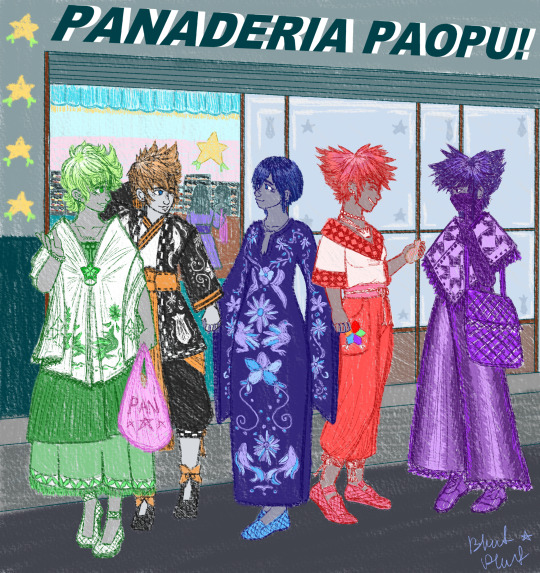
Sora swears this is the best panaderia on the isles, Vanitas is doubtful, and the rest are just excited to try all the pan dulce!
Inspired by @kh-yumio's Mexican/Latine scenarios, and some of my own HCs regarding the Heart Hotel, and Destiny Islands' culture and fashion :)!
(although most of it is just my own wardrobe-)
Alternate underneath :)!

#kh#kingdom hearts#kh sora#kh roxas#kh vanitas#kh xion#kh ventus#heart hotel#kh fanart#planet paintings#this is quite possibly the fastest ive every drawn smth this big lol. but it was a TON of fun#made good on that promise to give sora and the kids some pearls and piercings#xion and ventus are the only ones with visible gold name necklaces but sora roxas and vanitas all have one on too#u just cant see em lol#mostly based on my clothing (hidalgo region and el salvador) historical okinawan and slightly Filipino refences!#about 4-3 1/2 of these are just my actual clothes woth minor differences its really fun to dress up characters like you#reversed cosplay??#vanitas is wearing sun sleeves a mask and some tailored linen turtle neck or smth#can u tell this isbmy first time really doing a background? i did my best#also my first time drawing all these guys! except vanitas bc pony sora doesn't count#again! pls check out the tagged artist their stuff is amazing!!! big thanks for letting me tag ya!
82 notes
·
View notes
Text
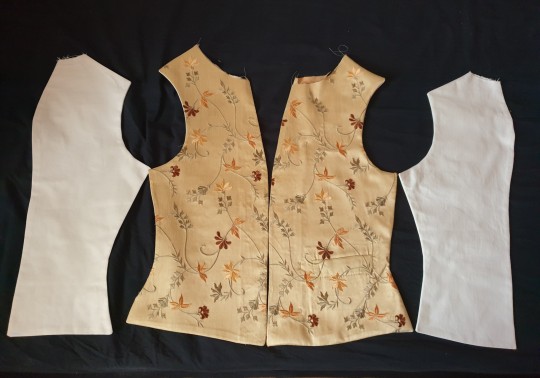

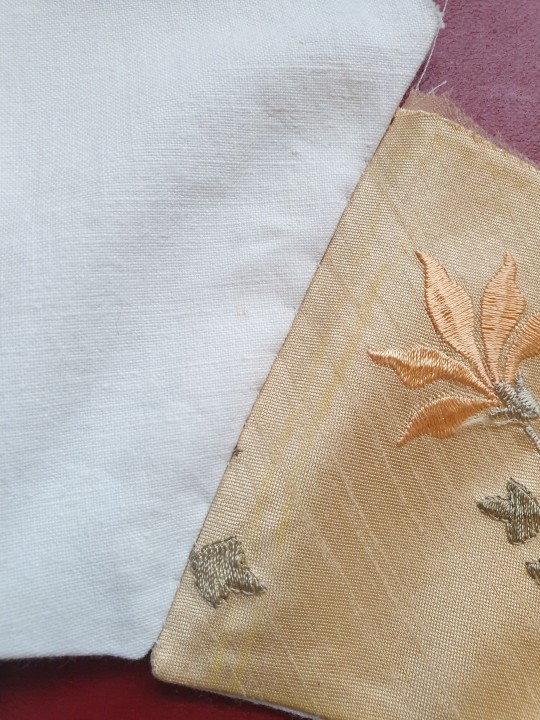
Waistcoat assembly!
I'm using a new to me method of sewing it all together by finishing each panel entirely and then handsewing them together. It makes a really nice seam!
#a talia original#talia's adventures in dressmaking#or tailoring in this case#sewing progress#historical costuming#waistcoat spam#gold waistcoat remake
57 notes
·
View notes
Photo
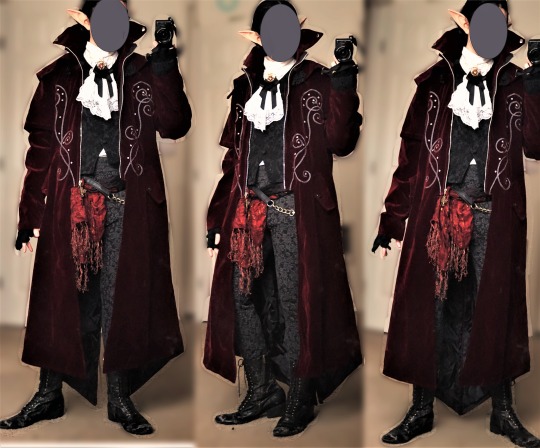
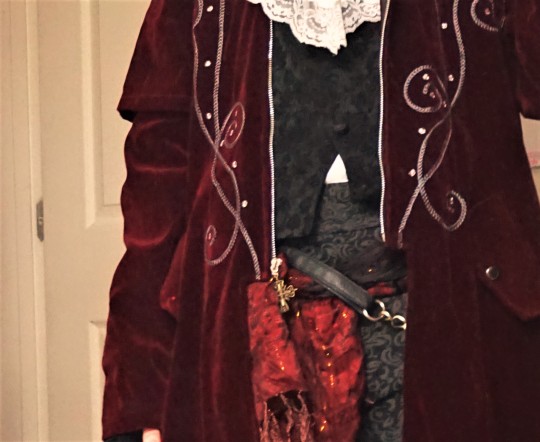
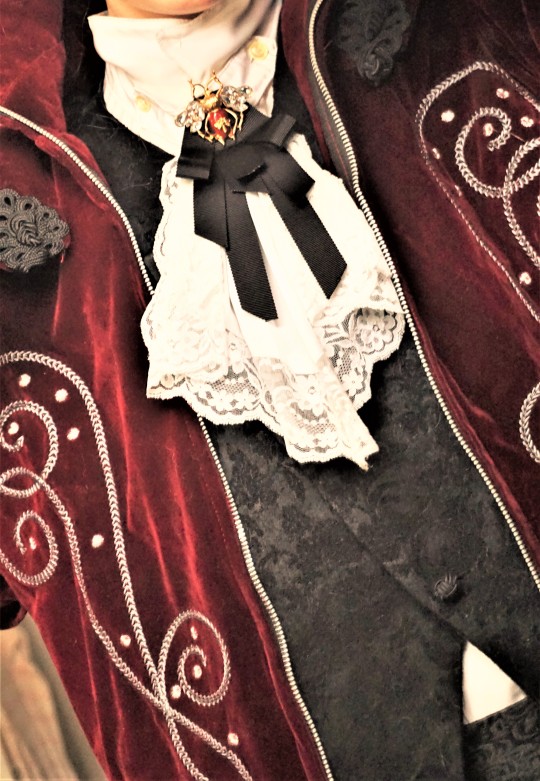
Obligatory fancier outfit that must be present anytime I post outfits
#self#fantasy costume#If I had the money for a custom tailored fantasy-ish victorian-ish suit instead of piecing together random thrift store items with like walm#rt halloween costume type jackets and stuff..#unstoppable.....#I would actually lean more straight up historical with my wardrobe it's just that everything I own basically is thrifted aside from a very#small portion of things (like usually socks for example I get from ebay. wigs from ebay. things that it's hard to find in thrift stores. etc#) and I rarely ever find stuff like that at the bins. Your closest bet is like. hopeing that the week you come in just so happens to also be#a week that a church costume department recently donated a bunch of old stuff. but I just haven't really had much luck finding like fancy ve#sts and suit coats and cloaks or like tunics and etc. etc.#Styles like mori kei or cult party kei are pretty accessible and easy for places like the bins (where youre usually digging through piles of#curtains and fabric scraps and doilies anyway). but finding like.. a straight up tudor england costume or something is . VERY rare#Sometimes you do find halloween costumes. Or like. stuff that's clearly like cheap 'Goth' stuff from shein or aliexpress that someone has do#nated and they can be a LITTLE okay in terms of usable for costumes. But you rarely find actual good quality stuff. obviously because like#real very good quality historical costumes are expensive and most people aren't just like 'yeah dump it off to goodwill' lol#In an ideal world though I would have fancy top hats and neck ruffles and stuff .. know this ghhjbhj#Lack of that will not stop me from taking picturesin basically the same outfit 6000 times though. My one single silky black vest and#one of the two solitary ruffly neck shirts I have every been able to find.#Pointy-ish little boots that I put with everything even thogugh they look terrible up close because they're literally like over 10 yrs old#I bought them so long ago and the black fake leather lining is like peeling off of the outside#ANYWAY#he's back again... the same little generic like elf vampire ruffle shirt with vest look.. might as well be the same guy#I support him and his dumbass disintegrating shoes anyway
67 notes
·
View notes
Photo


I made myself a floral-patterned victorian-inspired waistcoat as the first step to the lovecore suit I eventually want to make for (my dragsona) Valentine
#sewing#drag#steampunk#lovecore#waistcoat#living history#base was from a pattern I then had to majorly adjust cause despite cutting out the like tiniest men's size according to my measurements it#was still way too big and we had to take it in on literally all sides plus adjustments to actually make it more victorian-appropriate#cause the og pattern advertised itself as historic(-inspired) but was fully cut like a modern waistcoat smh#AND I learnt how to sew button holes!!!!!!#the way I ended up doing the shoulders fits a bit questionably but I can move and it doesn't pinch too much in the armpits so it's fine x'D#it's my first try at proper tailoring after all doesn't need to be perfect#as long as it's wearable
113 notes
·
View notes
Text

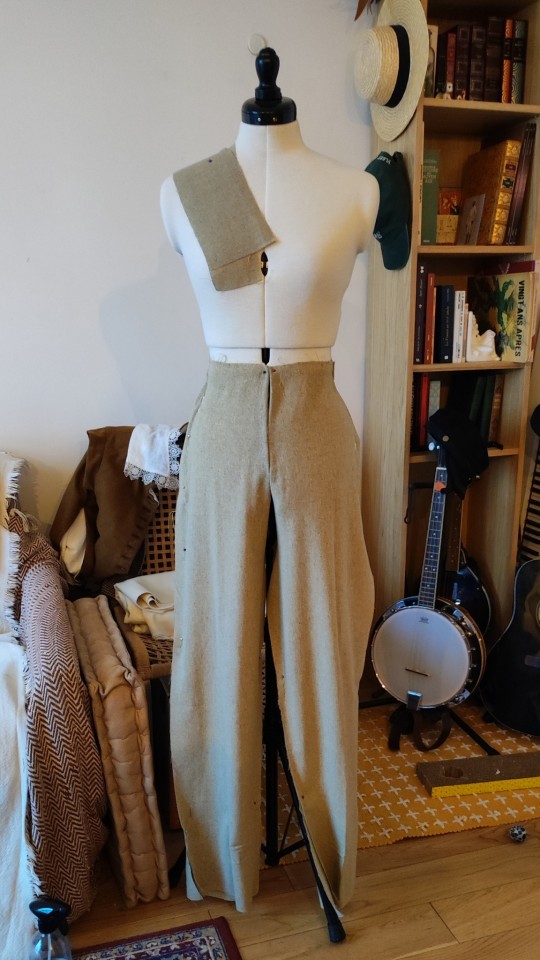
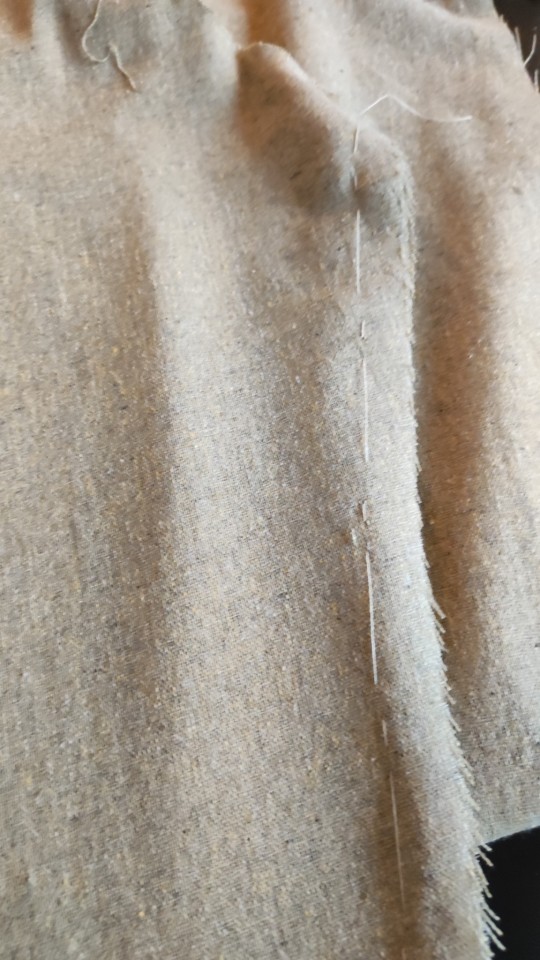

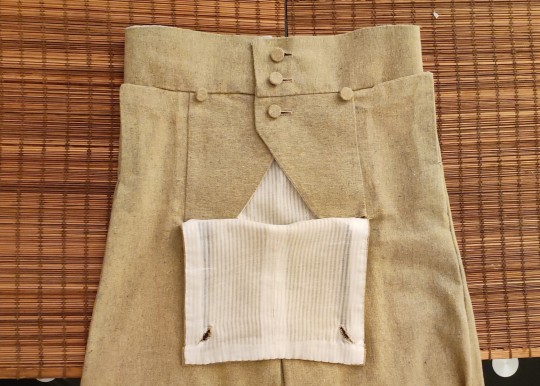
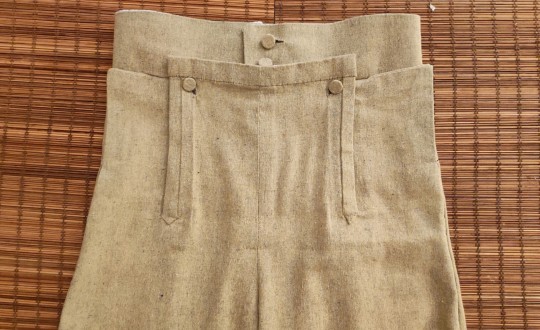
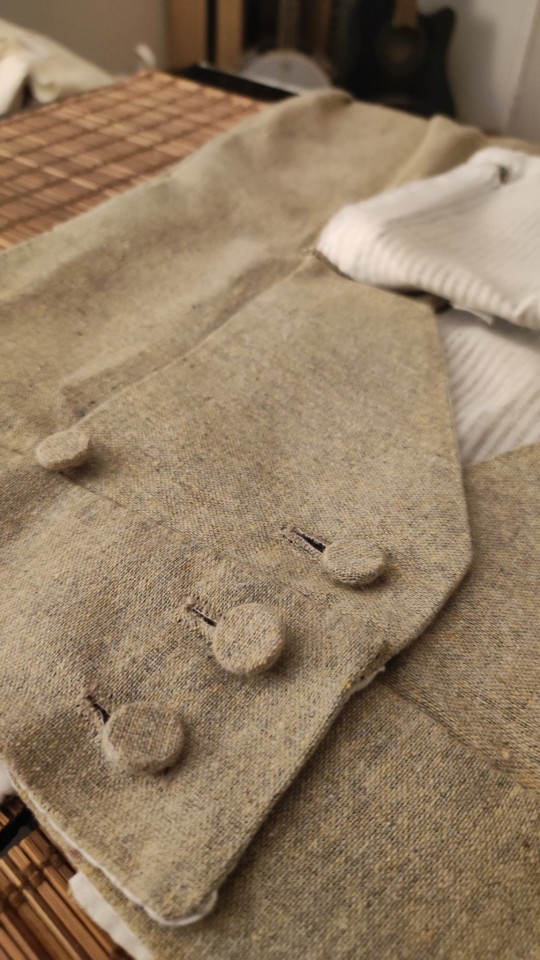
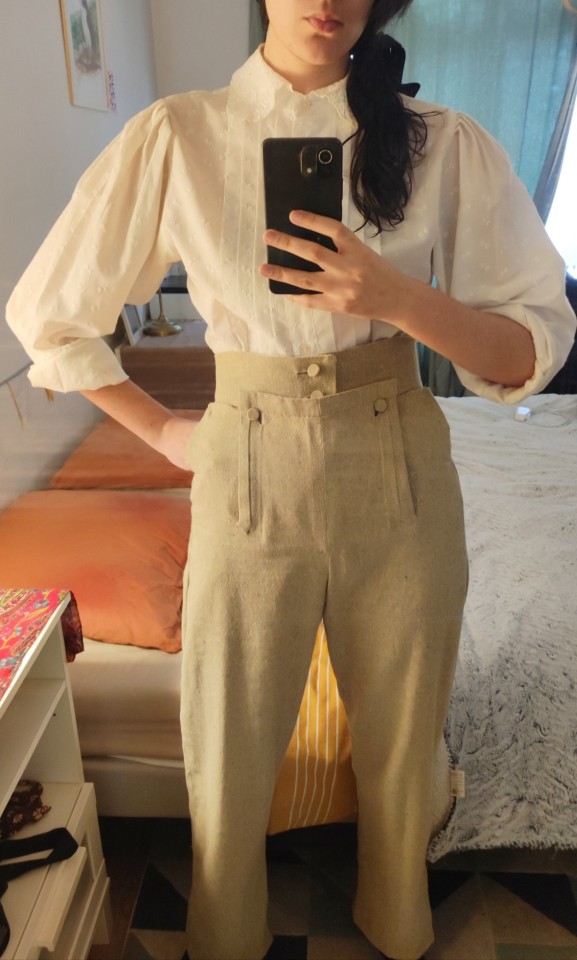
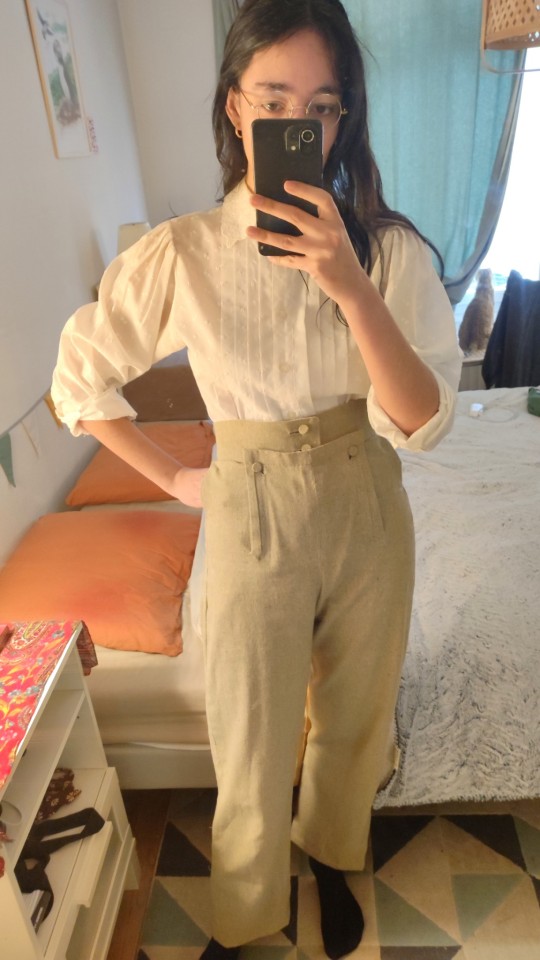
Entering my sans-culotte era babes
#historical fashion#sewing#tailoring#frev#historical costuming#history bounding#19th century#18th century
4K notes
·
View notes
Text
I made Tudor shapewear out of fabric scraps!
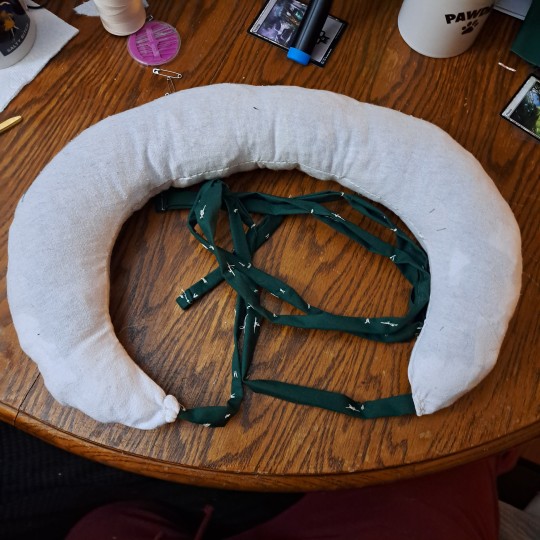
This is part of my ongoing project to make a Tudor French gown for the ren faire. While I'm not super concerned with historical accuracy for things like fabric fiber content and dyes, I *am* trying to be as accurate as possible with the silhouette, and that classic Tudor noblewoman silhouette requires some very specific undergarments.
This garment was commonly called a "bum roll" and was worn around the hips to add width. Sort of like 16th century butt pads.
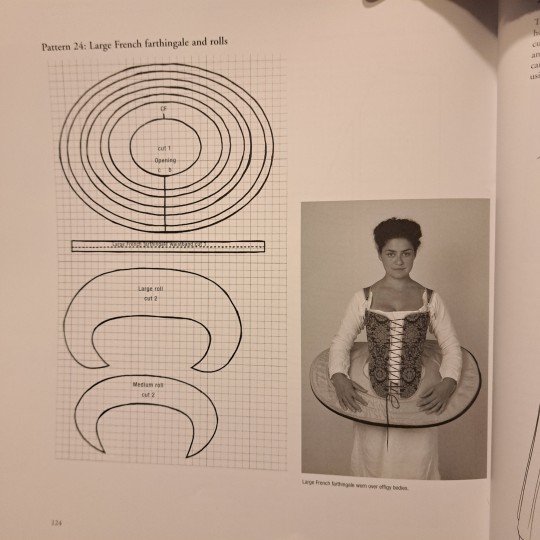
I used this pattern from The Tudor Tailor by Ninya Mikhaila and Jane Malcolm-Davies, which I resized to fit my hip measurements. This was my first time resizing a pattern!

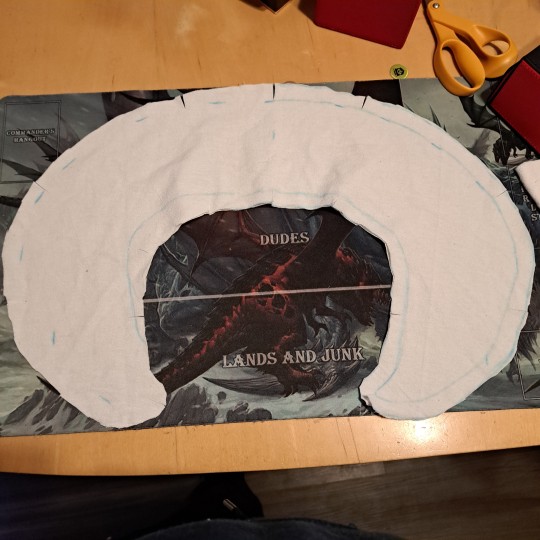
(Ignore the Magic: The Gathering playmat, my sewing table is also our card game table.)
Since this is essentially underwear, I decided to make it as cheaply as possible by using scrap fabric. The roll itself is made of leftover muslin from an embroidery project, the ties are made with fabric leftover from a quilt, and the roll is stuffed with scraps from various projects!
The next step of this project is to make a farthingale (similar to a hoop skirt), which will be worn on top of the roll to complete the silhouette.
#french gown project#tudor fashion#tudor history#tudor england#historic fashion#historic costuming#sewing#garment making#tailoring#hand sewing#sustainable fashion#sustainability#renaissance festival#renaissance faire#ren faire#crafting#mine
8 notes
·
View notes
Text
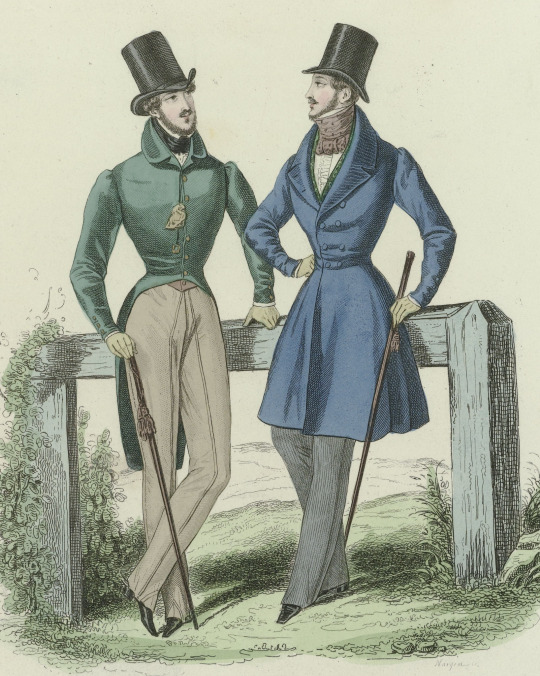
Fashionable menswear continued to emphasize a cinched waist throughout the 1830s. One French dandy of the Romantic era insisted that "The secret ... of dress lies in the thiness and narrowness of the waist. Catchetize your tailor about this ... Insist, order, menace ... Shoulders large, the skirts of the coat ample and flowing, the waistline strangled — that's my rule."
— Valerie Steele, The Corset: A Cultural History
Fashion plate in La Mode, April 1835 (detail), Rijksmuseum collection.
#Eighteen-Thirties Thursday#1830s#fashion history#dress history#romantic era#historical men's fashion#men's fashion#fashion#fashion plate#insist order and menace your tailor for a snatched waist!#valerie steele#the corset a cultural history
98 notes
·
View notes
Text

Details of the suit I am fitting tomorrow. Corduroy was certainly a choice I made 🫠 It looks fine for now… I’m trying to rock with it.



7 notes
·
View notes
Text

Lithograph of a fashionable gentleman getting ready for the German Revolution of 1848 captioned "Taille—No. 13—auf Ehre, Herr Baron, selbst bei uns in Berlin sehr selten!" ("Waist—No. 13—on honor, Herr Baron, very rare even here in Berlin!")
#very curious what No. 13 comes to in actual centimeters or inches#also note the tailor’s earring and the baron’s eminently twirlable waxed mustache#image brightened blemishes retouched for tumblr—refer solely to seller’s pic if buying#19th century#1800s#1840s#historical fashion#fashion history#men's fashion#19th century fashion#uniforms#military fashion#military history#19th century art#lithography#Illustration
97 notes
·
View notes
Text
Chapter 6 of The Tailor & The Seamstress is now up!
In which a little honesty goes a long way.
Read it on AO3: https://archiveofourown.org/works/55036891/chapters/140469433
Or on FF.net: https://www.fanfiction.net/s/14344551/6/The-Tailor-The-Seamstress
Read, review and enjoy! x

#fanfic#Rogue and Gambit#Rogue#Gambit#The Tailor & The Seamstress#Remy LeBeau#Anna Marie LeBeau#historical fiction#historical fashion#historical fanfic
22 notes
·
View notes
Text
Found some well dressed ladies while looking for sewing patterns

they're just so cool
16 notes
·
View notes